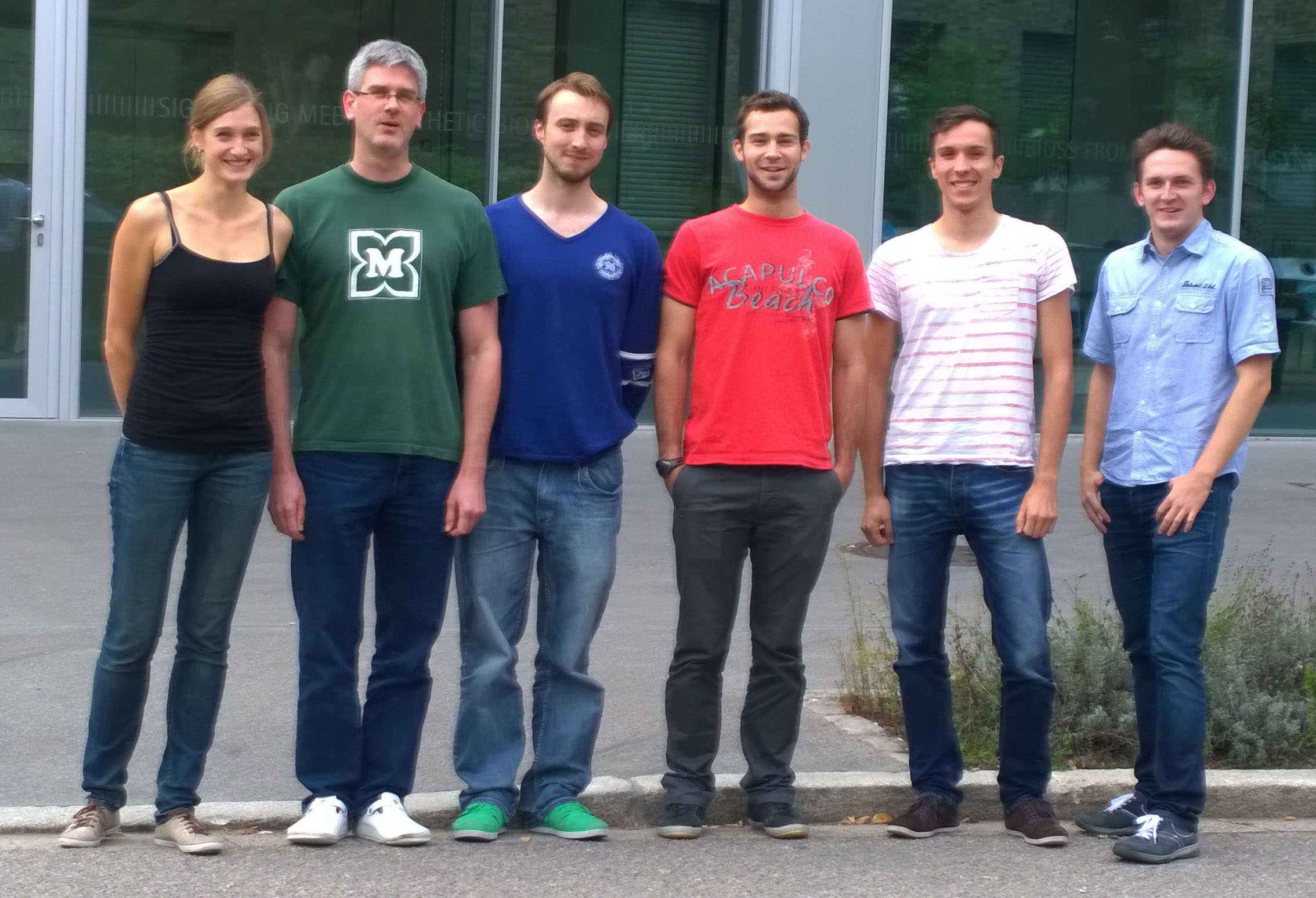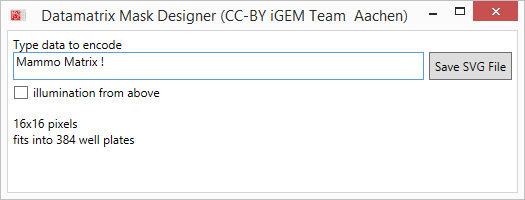Team:Aachen/Collaborations/Freiburg
From 2014.igem.org
m (→MammoMatrix) |
m (→Data Matrix Masks for illumination) |
||
| Line 12: | Line 12: | ||
== Data Matrix Masks for illumination == | == Data Matrix Masks for illumination == | ||
We decided to use masks to locally induce the cells in 384-well plates in a datamatrix pattern. To enable us to quickly design masks for different data to be encoded, we wrote a software to easily generate SVG-files for the lasercutter. | We decided to use masks to locally induce the cells in 384-well plates in a datamatrix pattern. To enable us to quickly design masks for different data to be encoded, we wrote a software to easily generate SVG-files for the lasercutter. | ||
| - | {{Team:Aachen/Figure|Aachen_DataMatrixMaskDesigner.png|title=Making a | + | {{Team:Aachen/Figure|Aachen_DataMatrixMaskDesigner.png|title=Making a datamatrix mask|subtitle=Upon entering a string, the software predicts if the datamatrix will fit into a 384-well plate. The SVG file can then be saved and used for lasercutting the mask.|width=350px}} |
For the first experiments we cut two different datamatrix patterns in a polypropylen foil. The masks can be used to cover the plates from the top, or from the bottom. | For the first experiments we cut two different datamatrix patterns in a polypropylen foil. The masks can be used to cover the plates from the top, or from the bottom. | ||
Revision as of 04:22, 7 October 2014
|
 "
"

